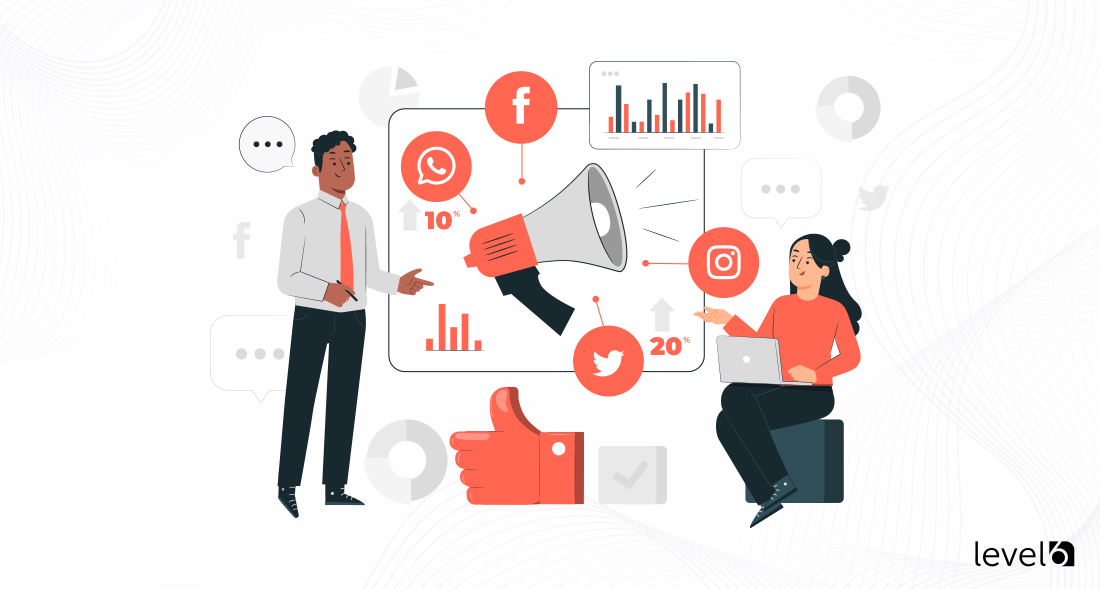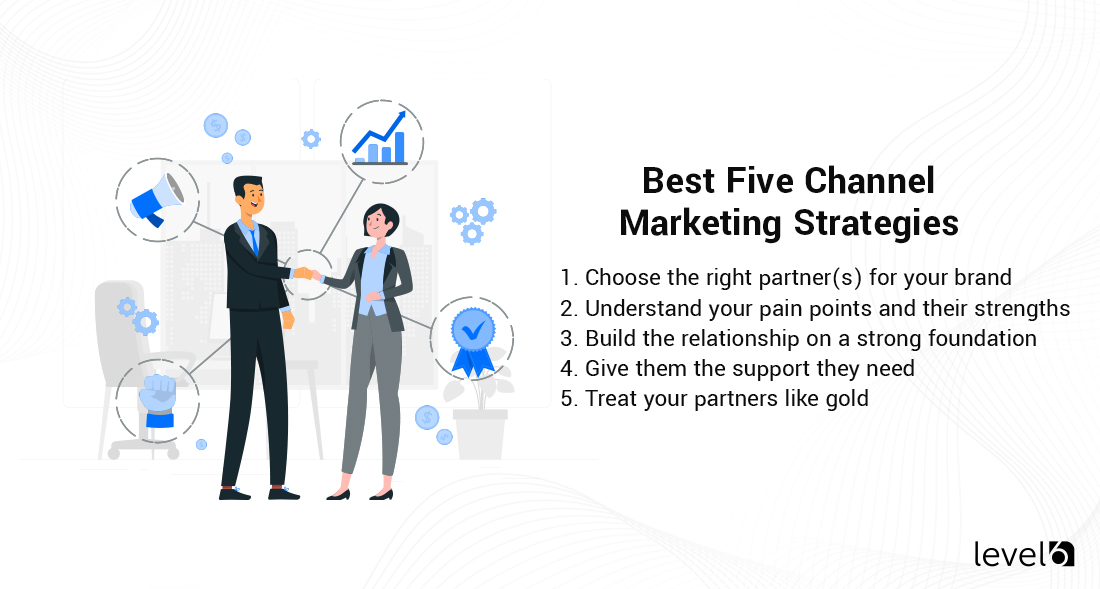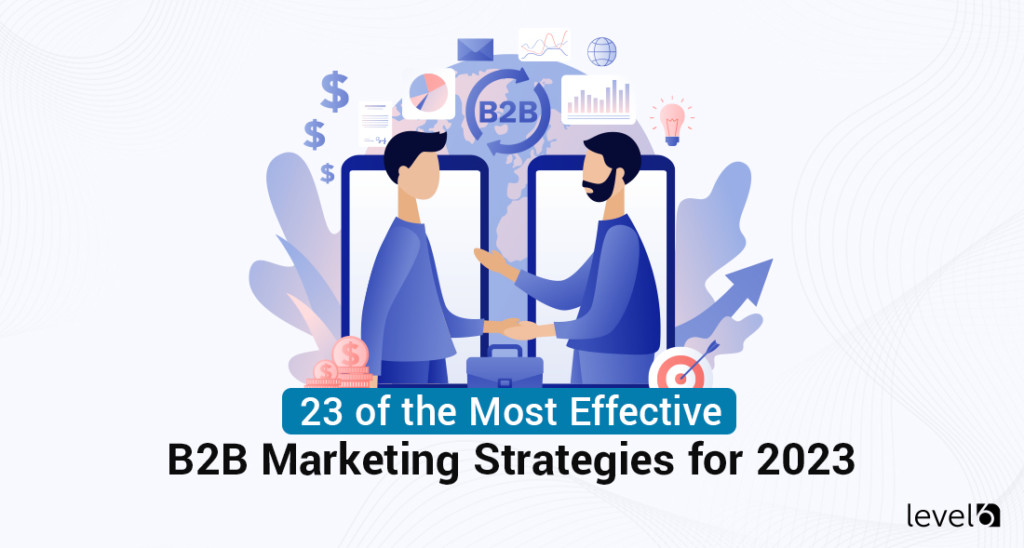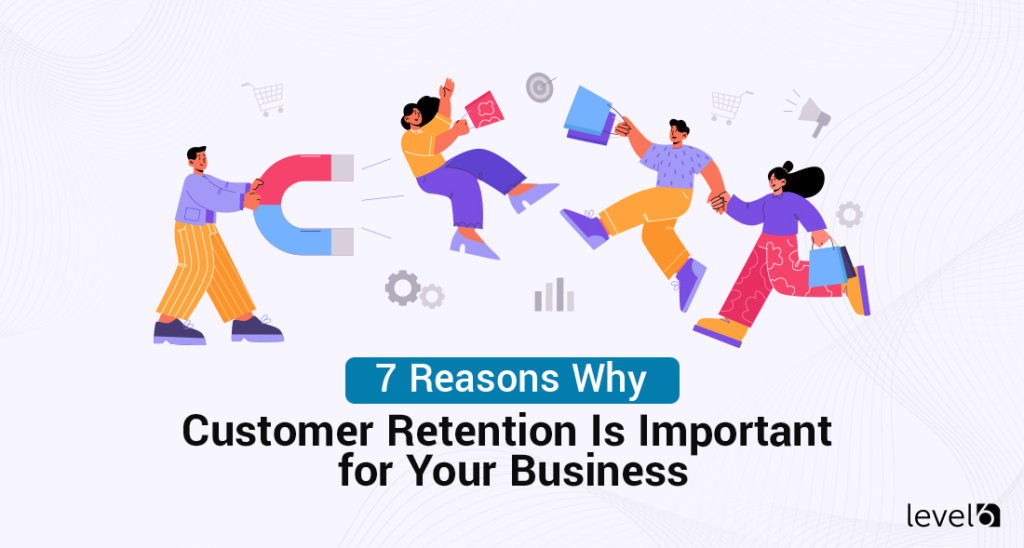You might be asking, what exactly is a channel marketing strategy?
The Economic Times defines channel marketing like this:
“The term Channel Management [or Marketing] is widely used in sales marketing parlance. It is defined as a process where the company develops various marketing techniques as well as sales strategies to reach the widest possible customer base.
The channels are nothing but ways or outlets to market and sell products. The ultimate aim of any organization is to develop a better relationship between the customer and the product.”
Let’s simplify this for you — channel marketing is a strategy of working with third parties to bring your products to market. It’s a key concept in marketing. Make friends and develop partnerships with those who can help sell your product.
If you’re wondering if this is the same as marketing channels, it’s not. Marketing channels refer to the setup of getting a product from the manufacturer to the customer.
The simplest marketing channel strategies can include these, taken from HubSpot’s blog:
- Social media
- Websites/blogs
- Email marketing
- Omni-channel marketing
- Video marketing
- Influencer marketing
- Search engine optimization
- Podcast marketing
- Word-of-mouth marketing
There are many more complicated marketing channel strategies, but that gives you the idea. This post is not about that.
It’s about channel marketing.
How Does Channel Marketing Work?
In today’s complex marketing world, it’s no longer enough to adopt one avenue for selling to customers if you hope and expect to reach the widest audience. Designing a program that lets you work with related parties is a smarter, faster, cheaper, and more effective way to grow your business.
Looking to learn more about an incentive, rebate
or reward program for your business?
Curious about costs?
Try our instant pricing calculator:
An example of channel marketing is when XYZ Furniture Makers develops relationships and partners with distributors, retailers, resellers, and wholesalers to market and sell their furnishings.
Study.com points out that it’s more “cost-effective to use third parties than to maintain internal resources necessary for the same marketing operations.” They also say channel marketing is a great way to increase brand recognition.
When one channel partner is well known in the industry, just being associated with them will build a brand’s credibility. Using this strategy has been proven to boost sales and expand opportunities exponentially.
Triptych writes about three significant benefits of incorporating channel marketing into your sales campaigns:
- It’s cheaper than hiring the same staff to generate the same reach.
- It’s like “a personal recommendation, giving your product an instant boost in credibility.”
- Your channel marketing partners do their own marketing. They’ll test different and particular marketing strategies from the ones you have the bandwidth and budget to do.
Channel marketing is a win-win strategy where your business and marketing partners both flourish. If the bottom line of both parties doesn’t grow, it’s not effective channel marketing, and no one will do it.
Benefits of Channel Marketing
Channel marketing can benefit how you can get critical feedback through a third-party partnership. Where your customers may be reluctant (or not) to give you honest feedback, it’s easier for them to do so with a partner who’s one step removed.
That unfiltered feedback is gold for you and your product.
Home Depot is a great example of how a channel partnership gives them access to exactly what their customers think of the products they bought at the store. The home improvement monster began partnering with local construction trades and developed a “Pros” program whose services Home Depot could offer to their customers.
If you go to your local Home Depot and purchase kitchen cabinets, blinds, plumbing fixtures, decking or roofing material, etc., they will have a roster of qualified trades who will come to your home and install whatever it is you bought.
These Pros are all third-party contractors who are vetted by Home Depot but aren’t on their payroll and get paid directly by the customer. They each have their own company that’s not dependent on work from Home Depot but happily contracts work from the big box store.
You can believe that if someone buys a toilet from Home Depot and has a plumber come to install it, they will tell them exactly what they think about the toilet. And that information gets back to Home Depot, and they use the feedback in their future buying and servicing strategies.
Without the expense of rolling the staff and setting up to create surveys and other ways to get customer feedback.
This is just one of the benefits that come with adding channel marketing to your business.
Types of Channel Marketing Partnerships
When you’re looking for ways to reach new markets and gain new customers, it only makes sense to partner with those who will reach audiences you could never hope to. When these partners are trusted influencers and authorities in their own domain, the potential of your reach explodes.
We found a great overview of 10 types of partnerships over at ReferralRock that give you an idea of what kinds of partnerships would benefit your business the most:
- Affiliates
- Content
- Distribution
- Charitable partnerships
- Joint product development
- Licensing
- Loyalty programs
- Product placement
- Shared outlets
- Sponsorships
They go on to describe how these types of partnerships work.
Best Five Channel Marketing Strategies
While there seem to be a million strategies you can use to get the best out of your channel marketing partners, we’ve distilled them down to the best five.
The last three have a similar theme but focus on different parts of the partnership.
- Choose the right partner(s) for your brand
- Understand your pain points and their strengths
- Build the relationship on a strong foundation
- Give them the support they need
- Treat your partners like gold
Choose the right partner(s) for your brand.
This (along with the rest of the strategies) seems almost self-evident. There’s a limit to the number of effective channel marketing partners you can manage, so it’s important that you focus on the ones who can help your sales and reputation the most.
Referral partners already know you and your brand and are excited about it. Their audience is made up of people with whom they already have a relationship, which makes their trust factor soar.
This type of partnership might not bring in as many leads, but their recommendations carry more weight than those of an affiliate partner. The growth may be slower, but it will be steadier. Costs for this type of partnership are relatively low.
A different type of partnership is that of a strategic alliance. When you share the same values and are particularly strong when the partnership uses co-branding or co-marketing strategies. The parties are related but not in competition with each other.
Ideal channel marketing partners have a ready-made audience who’s already interested in what you provide and would benefit from your product. To capitalize even more on this commonality between you and a potential partner, see if there’s something you could offer both your audiences together.
We love the idea of making sure each partner can have confidence that they accomplish at least one significant business goal because of your partnership.
Understand your pain points and their strengths.
To know how to market your service or product, it makes sense that you’ll need to know your customer’s pain points. If you are collaborating with a channel marketing partner, knowing your pain points and your partner’s strengths are also important.
Fourteen essential questions to ask about pain points can give you insight into your target audience’s needs and your own. Forbes enlisted experts from their Business Development Council to suggest the crucial questions you need to be asking:
- What are your business challenges?
- What are your overall priorities?
- What do you need to stop doing?
- Can you describe your customer journey?
- What stops you from meeting growth targets?
- How is your performance measured?
- What keeps you up at night?
- What aspects of your role don’t you like?
- How much time do you spend on certain tasks?
- What do you want and not want in the solution?
- What would you change about your job/company?
- What are your growth plans and strategies?
- What does your approval process look like?
- What’s the most sluggish part of your process?
The answers to these questions can provide you with valuable information as you set up a new relationship with a channel partner.
Six essential questions that will help you understand the strengths your new partner may bring are:
- What are three of your company’s greatest strengths?
- How did you overcome some of your biggest challenges?
- What do you like about your business?
- What part of the business do you most enjoy doing?
- What do you yearn to do?
- What are some unique skills you use in your business?
Build the relationship on a strong foundation.
It’s hard to overstate the importance of having a channel partner agreement before beginning to do business. The right agreement states the “terms of the partnership between both parties, including expectations, compensation, and contractual obligations.”
There are 10 major sections you’ll want to include in a partnership agreement:
- Definitions
- Purposes of the agreement
- Confidentiality obligations
- Payment terms
- Incentives
- Indemnification section
- Relationship with partners (independent contractors)
- Marketing efforts and terms
- Termination of this agreement
- Signature section
Anyone who has experience when it comes to contracts and agreements will agree that having a signed contract in place at the beginning of the relationship is paramount. When both parties are getting along, speaking freely, and are happy with each other. Before the “honeymoon period” is over.
Some helpful tips from ReferralRock are to include a glossary of business terms that explain “legal language and marketing jargon.” Use clear, easy-to-understand language as much as possible.
Also, setting out the goals that each party will help the other achieve on the front end will hold everyone accountable throughout the course of the relationship. It’s highly advisable to take the time to get a third-party expert to look through the agreement to make sure you’ve said what you meant to say and that it will hold up in a court of law.
You never want to think about terminating the agreement before it’s even started, but if, for whatever reason, your partnership needs to end, having clear guidelines on how to end well is just as important as beginning well.
Give them the support they need.
Partner Channel Management (PCM) is the buzzword for how to build and manage relationships with a channel partner. This is important because having a “one-size-fits-all” approach isn’t always the best strategy.
Five rules to managing channel partners are something Kiflo knows about. They understand that the right partner channel is “collaborated with, a custom solution is adopted, and the appropriate partner management strategy is employed.”
Their five rules for managing channel partners include:
- Create a partner plan
- Strong and clear communication
- Establish mutual goals
- A proper onboarding process
- Use a Partner Relationship Management tool
When it comes to the onboarding process, they insist it’s not a “one-and-done task.” The more new partners know about your company and its mission, the better you will be able to partner together.
Kiflo recommends using a PRM software tool with easy-to-use features and one that can manage multiple partnerships “via a single unit.” The best of these tools lets you onboard effectively, disperse rewards and incentives, communicate with your partners, and see “relationship life cycles, partner sales goals, partner capacity, lead generation, among others.”
Treat your partners like gold.
The golden rule doesn’t exist just for personal relationships. It’s obvious this rule applies just as much to business relationships.
Mike Coleman is the North American Channel Chief for Avaya. He’s a “big fan of ‘give-get.’ We’re going to give [our partners] these resources in exchange for a plan, and we’re going to get ROI back that will be a ‘win-win.'”
What benefits will you offer your partner? The best way to answer that question is by asking a potential partner what they want and need.
Over at Logic Bay, they talk about how to keep partners motivated and engaged. Their areas of focus are in the manufacturing, financial and higher education sectors, but one of their pieces of advice applies equally well here.
“[A] great way to keep your partners feeling supported is one of the most simple steps of all: make sure there are clear lines of communication and that they have relevant information about updates to your plans and business objectives.”
Channel Marketing Challenges
It’s not all upside with no downside. There’s more to a successful channel marketing relationship than setting it up and getting busy elsewhere in your business.
Some of the challenges Triptych warns of include:
- Channel partners might release “noncompliant or inconsistent” information about your brand.
- Not every channel partner will be able to give you the helpful analytics you need to understand how effective their campaigns are.
- You won’t have control over how much experience their marketing has.
But once you’ve developed a steady stable of channel marketing partners who are aligned with what you’re trying to do, you can focus on developing your product and ensuring all the behind-the-scenes pieces of your business are behaving and performing exactly as they should. While the relationships you’ve built can help do the heavy lifting of selling.

Claudine is the Chief Relationship Officer at Level 6. She holds a master’s degree in industrial/organizational psychology. Her experience includes working as a certified conflict mediator for the United States Postal Service, a human performance analyst for Accenture, an Academic Dean, and a College Director. She is currently an adjunct Professor of Psychology at Southern New Hampshire University. With over 20 years of experience, she joined Level 6 to guide clients seeking effective ways to change behavior and, ultimately, their bottom line.
 Demo
Demo












